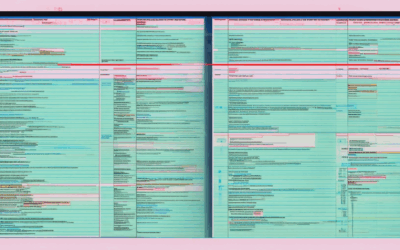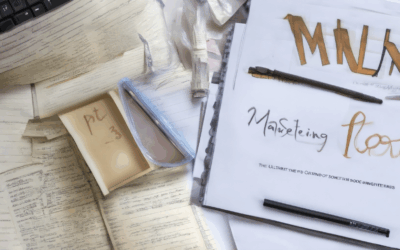Understanding our character flaws is an essential journey toward self-awareness and growth. In a world where everyone has strengths and weaknesses, recognizing our defects of character can be both enlightening and transformative. Whether you’re working on yourself personally, developing complex characters for storytelling, or simply seeking insight into human behavior, delving deep into the complexities of character flaws offers profound revelations.
Key Takeaways
– Align Flaws with Backstory: Ensure your character’s flaw naturally stems from their history and personality.
– Avoid Clichés: Steer clear of stereotypical flaws like laziness; instead, link flaws to specific experiences.
– Consider Flaw Types: Choose from moral flaws (greed, dishonesty), personality traits (overconfidence), or phobias (arachnophobia).
– Impactful Flaws: Let flaws shape actions, decisions, and relationships, driving growth and conflict.
– Psychological Appeal: Flaws can be attractive due to uniqueness, authenticity, confidence, and mystery.
– Aesthetic and Evolutionary Views: Flaws complement features and signal vitality.
– Leverage Flaws: Embrace authenticity, balance strengths, own flaws confidently, and use complementary features.
– Personality Traits Defined: Traits like extraversion, introversion, thinking, feeling, perceiving, judging, openness, conscientiousness, agreeableness, and neuroticism shape behavior and relationships.
– Fundamental Insights: Personality traits offer deep insights into human behavior and individual differences.

Defects of Character
A defect of character refers to a persistent pattern of behavior or thought that deviates from societal norms or ethical standards. These defects can negatively impact relationships, career opportunities, and overall well-being. Understanding and addressing these defects is crucial for personal growth and self-improvement.
Common Defects of Character
- Honesty and Integrity: Dishonesty, lying, or cheating can erode trust and damage reputation.
- Empathy and Compassion: A lack of ability to connect emotionally can lead to insensitive behavior.
- Responsibility and Dependability: Inconsistency or failure to fulfill obligations can harm reliability.
- Critical Thinking and Judgment: Poor decision-making or impulsivity can result in poor choices.
- Anger Management: Difficulty controlling anger can lead to conflict and strained relationships.
- Fear of Failure: Excessive worry about success or avoidance of challenges can limit growth.
Root Causes of Defects of Character
Defects of character often arise from psychological, social, or environmental factors. They may stem from:
- Poor role modeling or upbringing
- Societal pressures or cultural influences
- Unresolved trauma or negative life experiences
- Lack of education or awareness of emotional intelligence
Identifying and Addressing Defects
Recognizing defects of character is the first step toward improvement. Here’s how to approach it:
- Self-Reflection: Regularly reflect on your actions and thoughts to identify patterns.
- Seek Feedback: Ask trusted friends, family, or mentors for their perspectives.
- Practice Self-Compassion: Understand that defects can be addressed with effort and determination.
- Engage in Therapy or Counseling: Professional guidance can provide tools and strategies for improvement.
- Join Support Groups: Connecting with others who share similar challenges can foster mutual support and growth.
Improving Character
Overcoming defects of character requires intentional effort and sustained change. Consider the following strategies:
- Set Clear Goals: Define what you aim to achieve and track your progress.
- Develop Healthy Habits: Engage in regular exercise, maintain a balanced diet, and ensure adequate sleep.
- Practice Gratitude: Focus on positive aspects of life to cultivate a more optimistic mindset.
- Learn from Mistakes: View errors as opportunities for growth rather than failures.
By acknowledging and addressing defects of character, individuals can enhance their lives and contribute positively to their communities. Remember, change takes time, but with dedication and perseverance, lasting growth is achievable.
What is a Good Fatal Flaw?
A good fatal flaw is a significant yet recognizable weakness or imperfection that adds complexity to a character or situation. It is notable enough to impact outcomes but not necessarily catastrophic on its own. This type of flaw often serves as a point of interest, driving conflict, and providing opportunities for growth or redemption.
Examples of good fatal flaws include:
- Indecisiveness : As seen in characters like Hamlet, this flaw leads to procrastination and missed opportunities, creating tension and drama.
- Overambition : Excessive drive for success can lead to neglect of important relationships and burnout, making it a notable yet flawed characteristic.
- Over sensitivity : Being overly reactive to criticism or easily offended can hinder social interactions and personal growth, adding depth to the character.
In leadership roles, a good fatal flaw might be excessive rigidity, making decision-making difficult but not impossible. In relationships, possessiveness can harm trust but may also highlight the need for communication and balance.
Ultimately, a good fatal flaw is a nuanced imperfection that enriches the narrative or character arc, making it a compelling element in storytelling or personal reflection.

What is a Fatal Flaw in Someone’s Character?
A fatal flaw, often referred to as a character flaw or moral failing, is a fundamental weakness or defect in a person’s character that significantly compromises their judgment, decisions, or behavior. This flaw often stems from an inherent trait or a learned habit that leads to poor choices and ultimately undermines personal growth or success.
Common examples of fatal flaws include:
- Hubris – Excessive pride or arrogance leading to a sense of invincibility, often resulting in downfall through overconfidence.
- Greed – An insatiable desire for wealth, material possessions, or power, which can lead to unethical actions and ruinous consequences.
- Jealousy – Intense or irrational envy of others’ success or possessions, sometimes manifesting in harmful behaviors.
- Ambition – A relentless pursuit of goals, often at the expense of ethical considerations or relationships, potentially causing isolation or failure.
- Self-deception – The inability to recognize one’s own flaws, leading to a lack of accountability and persistent negative patterns.
Recognizing and addressing these flaws is crucial for personal development. By fostering self-awareness, practicing empathy, and seeking feedback, individuals can identify their weaknesses and work toward overcoming them. This process not only enhances personal growth but also fosters healthier relationships and more sustainable success.
For further exploration of character development and storytelling techniques, visit our literary platform to discover insights and resources tailored for writers and readers alike.

What Flaw Should I Give My Character?
Assigning a flaw to your character is a crucial element of character development. A well-crafted flaw can add depth, complexity, and relatability to your character, making them more engaging for readers.
Consistency is Key
Your character’s flaw should align with their backstory, personality, and overall arc. For instance, if your character grew up in a chaotic environment, their flaw might stem from a fear of instability or a desire for control. Consistency ensures that the flaw feels natural and believable.
Avoid Stereotypes
When assigning flaws, steer clear of clichés and stereotypes. Instead of making your character lazy or dim-witted, tie their flaw to a specific experience or trait. For example, a character who struggled with authority figures as a child might develop a mistrustful nature.
Consider the Type of Flaw
Flaws can take many forms:
- Moral Flaws: Greed, dishonesty, or cowardice.
- Personality Traits: Overconfidence, impulsiveness, or perfectionism.
- Phobias: Arachnophobia, claustrophobia, or fear of failure.
Make It Impactful
The flaw should influence your character’s actions, decisions, and relationships. For example, if your character fears rejection, this could lead to avoidance behaviors or strained connections with others.
Examples to Inspire
Example 1: A character who grew up in poverty might struggle with generosity, always worrying about financial security.
Example 2: A character who experienced betrayal in a past relationship might develop trust issues, viewing everyone with suspicion.
Final Thoughts
Remember, the flaw is not just a trait—it’s a tool that drives your character’s growth and development. Use it to create conflicts, challenges, and moments of introspection that keep readers invested in your story.
What Flaws Are Attractive?
Flaws, imperfections, or defects can sometimes be perceived as attractive due to psychological, evolutionary, or aesthetic factors. These traits often stem from individual uniqueness and can become desirable features depending on context, personality, and societal norms.
The Psychology Behind Attractive Flaws
- Unique Appeal : Imperfections can make someone stand out in a crowd, often capturing attention in ways that conventional perfection might not. This uniqueness can be seen as intriguing and magnetic.
- Authenticity : Flaws can signal authenticity. When flaws are presented genuinely and without pretense, they can make a person appear more relatable, approachable, and real.
- Confidence : People with self-awareness and confidence often embrace their flaws, which can make them more attractive. Confidence in owning imperfections can be sexually appealing and charismatic.
- Mystery Factor : Some flaws create an air of mystery or enigma. When flaws aren’t overly obvious or corrected, they can pique curiosity and intrigue, making the person more fascinating.
Aesthetic and Evolutionary Perspectives
From an aesthetic viewpoint, certain flaws can complement a person’s features, creating balance and harmony. Evolutionarily, imperfections can signal health and vitality, as minor flaws are often signs of a dynamic and active life.
How to Leverage Attractive Flaws
- Embrace Authenticity : Accept and showcase your unique characteristics. Authenticity attracts genuine connections and can make you more memorable.
- Highlight Strengths : Balance flaws with strengths. Present yourself in a way that highlights your positive attributes while acknowledging your imperfections.
- Confidently Display Flaws : Own your flaws with confidence. A positive attitude toward imperfections can enhance your appeal and make you more attractive to others.
- Seek Complementary Features : Understand how your flaws can complement your overall appearance. This can involve styling choices or grooming habits that highlight your best assets.
By understanding and leveraging these principles, you can maximize your personal appeal and create a more authentic, captivating presence.

What Are Personality Traits?
Personality traits refer to distinct patterns of behavior, thinking, and feeling that define individuals. These traits are often consistent across different situations and contribute to how people perceive themselves and interact with others.
Key Personality Traits Categories
1. MBTI Personality Traits
- Extraversion (E) – Energy is focused on the outside world, seeking stimulation and social interaction.
- Introversion (I) – Energy is focused inward, preferring quiet, reflective activities.
- Thinking (T) – Logical and analytical, making decisions based on objective analysis rather than emotions.
- Feeling (F) – Emotionally driven, prioritizing harmony and the well-being of others.
- Perceiving (P) – Flexible and spontaneous, open to change and new experiences.
- Judging (J) – Organized and structured, valuing order and planning.
2. Big Five Personality Traits
- Openness to Experience – Enjoys exploration, variety, and discovery.
- Conscientiousness – Reliable, responsible, and organized.
- Extraversion – Similar to MBTI E, energy focused outward.
- Agreeableness – Friendly, cooperative, and empathetic.
- Neuroticism – Prone to anxiety, stress, and mood swings.
Understanding Personality Traits
Personality traits shape how individuals behave, make decisions, and relate to others. Recognizing these traits can enhance self-awareness and improve interpersonal relationships. By understanding personality traits, individuals can better navigate social interactions and personal growth.
Conclusion
Personality traits are fundamental aspects of human behavior, influencing thoughts, feelings, and actions. Whether through the MBTI framework or the Big Five model, understanding these traits offers valuable insights into individual differences and the complexities of human nature.





0 Comments